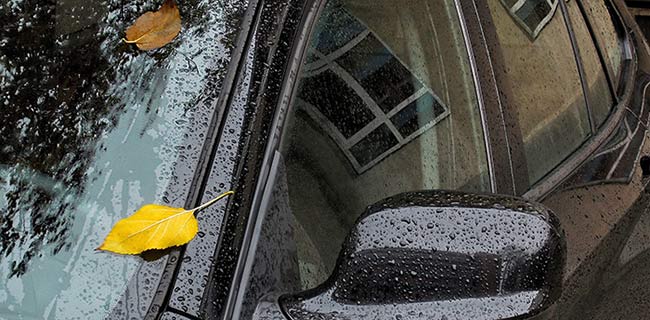 Parts of the UK are having an Indian summer at the moment, but never fear – autumn conditions will soon be with us. It only seems five minutes since we posted our summer driving tips, and now it’s time to think about the changing road conditions that lie ahead.
Parts of the UK are having an Indian summer at the moment, but never fear – autumn conditions will soon be with us. It only seems five minutes since we posted our summer driving tips, and now it’s time to think about the changing road conditions that lie ahead.
So many drivers trust to luck in the autumn, but just a few minutes preparation could save you and your family a lot of hassle. With that in mind, here are our top six autumn driving tips:
1. Check the tread depth on your tyres
Autumn can be a game-changer for how your tyres perform. Worn tyres may cope perfectly adequately in dry conditions, but suddenly become unpredictable and dangerous in the wet. The problem is that worn tyres fail to adequately remove a layer of moisture underneath the tread, which can reduce grip catastrophically. At least 3mm of tread is recommended to stay safe. See our section on UK Tyre Law for more details.
Regarding summer/winter tyres, you should consider changing to winter tyres if you’re on your summer ones (see below).
2. Keep something warm in the car
The standard advice for most breakdowns is to exit your car carefully, then wait nearby at a safe distance – and behind a crash barrier if possible. Until help arrives, that means you might be exposed to the elements. It’s bad enough when the car breaks down – make sure you don’t add to your misery by having to stand around without any suitably warm clothing!
3. Carry a torch
As the days get shorter, chances are you’re going to be doing some of your travelling in the dark. A torch can be handy for all sorts of situations: examining damage to your car, investigating punctures, helping out if there’s been an accident, or simply finding a dropped set of keys.
Many people have stopped carrying torches because their smart phone has a built-in torch. We still think a torch is a good idea – you might need to save the battery on your phone.
4. Be kind to your engine
In order to properly lubricate the moving parts in your engine, the oil needs to be flowing smoothly. It can only do this when its reached an adequate temperature. Obviously, as the weather turns colder, this takes longer.
In colder conditions, give the engine a few more minutes to warm up before you get into the higher revs. This will reduce unnecessary wear and tear on your engine.
5. Carry an ice scraper and de-icer
If you de-junk your car every so often, your scraper and de-icer might be sitting on the garage shelf when you most need them. Trying to scrape the windshield with a credit card is a long and tedious way of doing it. It can even be dangerous, as many people run out of patience before the window is properly cleared.
6. Change your summer tyres to winter tyres
We’ve blogged before about the differences between summer and winter tyres. As the temperatures start to drop, it’s well worth considering changing to a dedicated Winter tyre – especially if you own any sort of performance vehicle. Winter tyres are designed to perform well in snow or at low temperatures. For example, one estimate is that at 30 mph, winter tyres will stop you 8m sooner on snow.
Although winter tyres don’t grip quite so well in dry conditions ( compared to premium summer tyres), many motorists consider this is more than offset by the improved performance during low temperature or inclement conditions.
If you’re still running summer tyres, our seasonal refit service will sort you out quickly and conveniently.
More autumn driving tips
If you have any additional tips to help get the most out of winter or autumn driving, feel free to get in touch and we might just add them in.
And don’t forget, for all your tyre fitting needs in South Oxfordshire, get in touch.
